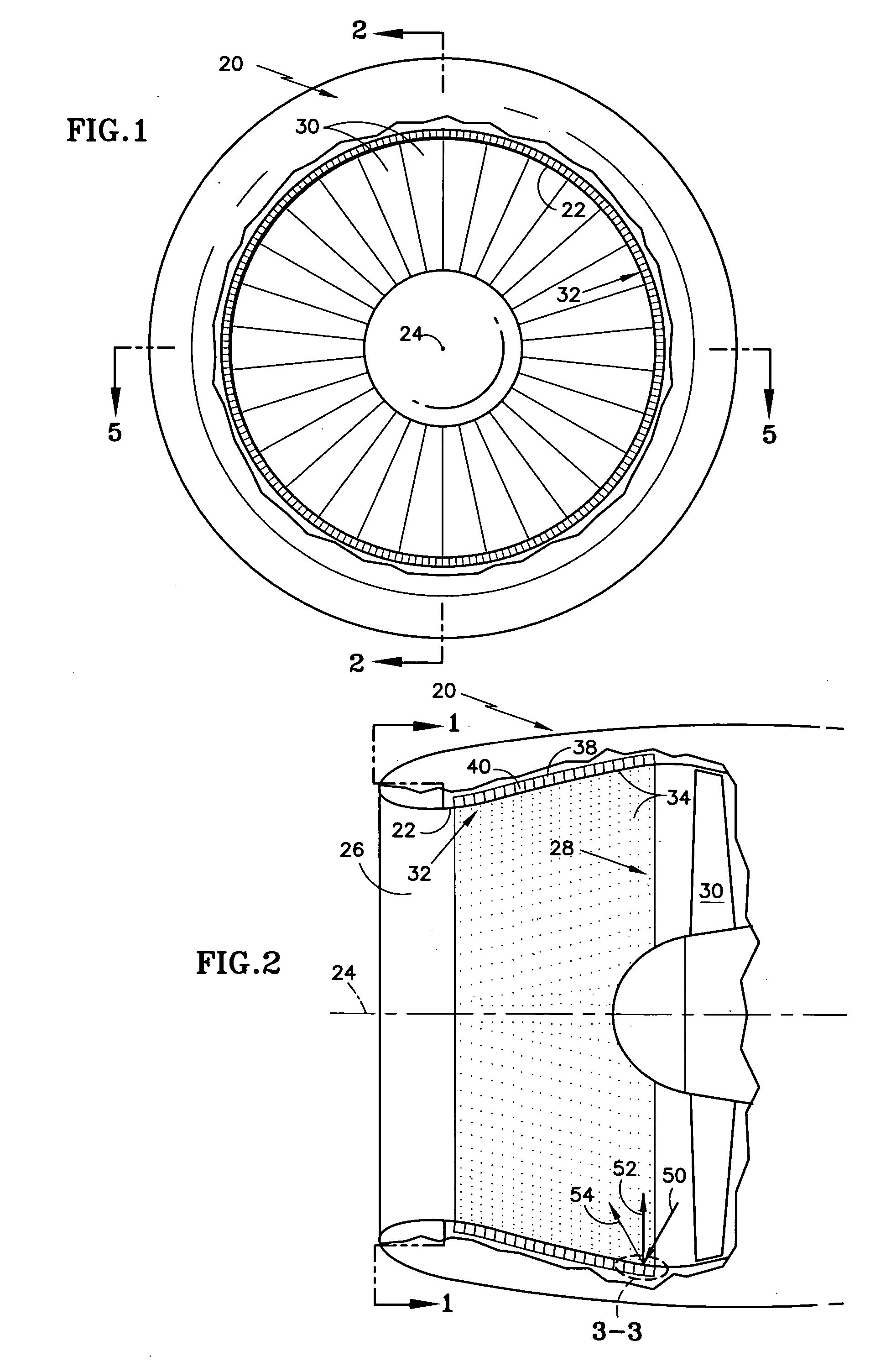Acoustic liner with a nonuniform depth backwall
a backwall and acoustic liner technology, applied in the field of noise attenuating liners, can solve the problems of engine noise, objectionable noise, and ineffectiveness of acoustic liner, and achieve the effect of reducing noise in the duct without introducing undue weight, cost or complexity, and without jeopardizing the aerodynamic performance of the du
- Summary
- Abstract
- Description
- Claims
- Application Information
AI Technical Summary
Benefits of technology
Problems solved by technology
Method used
Image
Examples
Embodiment Construction
[0028]FIGS. 1, 2 and 5 illustrate a turbine engine inlet duct 20 defined by duct interior wall 22, which circumscribes a duct axis 24. The illustrated inlet duct is substantially circular in cross section when viewed parallel to the engine axis, although some inlet ducts have a noticeably less circular shape. One end 26 of the duct is open to the atmosphere. The other end of the duct, which is axially offset from the open end, is immediately forward of a compressor represented by a rotatable fan 28 having an array of blades 30. During engine operation the fan is a source of noise.
[0029] Portions of the duct interior wall 22 are lined with an acoustic liner 32. A typical acoustic liner comprises a face sheet 34 perforated by numerous small holes 36 (visible in FIGS. 3 and 6) and an imperforate back sheet or backwall 38 spaced from the face sheet. The face sheet defines the interior contour of the duct wall as seen best in FIGS. 2 and 5. An array of resonator chambers 40 or other sou...
PUM
 Login to View More
Login to View More Abstract
Description
Claims
Application Information
 Login to View More
Login to View More - R&D
- Intellectual Property
- Life Sciences
- Materials
- Tech Scout
- Unparalleled Data Quality
- Higher Quality Content
- 60% Fewer Hallucinations
Browse by: Latest US Patents, China's latest patents, Technical Efficacy Thesaurus, Application Domain, Technology Topic, Popular Technical Reports.
© 2025 PatSnap. All rights reserved.Legal|Privacy policy|Modern Slavery Act Transparency Statement|Sitemap|About US| Contact US: help@patsnap.com



